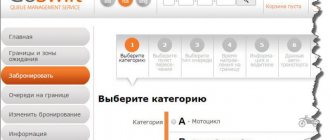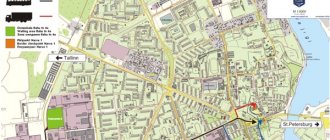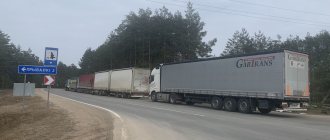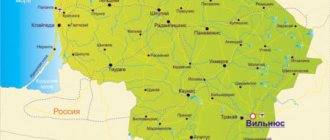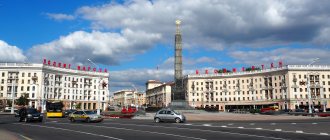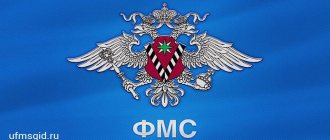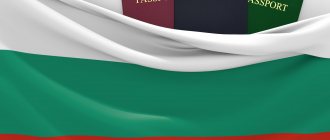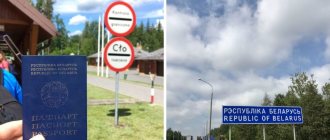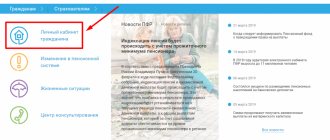Estonia is an amazing European country. Its borders are washed by the warm Baltic Sea on one side, and surrounded by Russia and Latvia on the other. Throughout the country you can enjoy wonderful views and a huge variety of historical attractions. It is not for nothing that tourists from all over the world strive to spend an unforgettable vacation in Estonia and absorb all the charm of the atmosphere of this state.
It is worth paying attention to how tourists can get to Estonia. In addition to air travel, Russian citizens also have the opportunity to get to the country by their own transport. This, undoubtedly, makes the trip more budget-friendly (especially if the trip is planned by the whole family) and interesting, because there is an opportunity not to be limited to one country. In our article we will tell you how to book a queue at the Estonian border with Russia.
Entry points to Estonia
The current rules for crossing the Estonian border were introduced in 2021. There is a unified electronic database - the queue information system, which is used at three border highway points:
- Ivangorod - Narva;
- Kunichina Gora – Koidula;
- Shumilkino - Luhamaa.
Next to each of them there is a waiting area, within which drivers wait for their time.
Border highway point Ivangorod - Narva
The Ivangorod-Narva checkpoint is the largest, which is why it is popular among travelers. Located at: Kingiseppskoe highway, 8, Ivangorod, Leningrad region. Contact phone: (81375) 5-29-78.
The point is located 120 km from St. Petersburg and 780 km from Moscow. Operates around the clock. There is a 24/7 CAPO Duty Free store and Tax Free value added tax (VAT) refund points.
Border highway point Kunichina Gora - Koidula
To get from St. Petersburg to the Kunichina Gora – Koidula checkpoint, you will have to cover 330 km. The route from Moscow is 730 km. Access to the border is via a toll highway.
Location of the point: village of Kunichina Gora, Pechora district, Pskov region. Phone number: (81148) 9-34-27.
This checkpoint is also 24/7. On its territory there is a CAPO Duty Free store and Tax Free return points.
As statistics show, the workload of this point is several times less than the previous one. Therefore, the line on the Russian-Estonian border moves much faster here.
Border highway point Shumilkino - Lahamaa
You can get to the Shumilkino – Lahamaa checkpoint along the free Pskov highway. It is located at the address: Shumilkino village, Panikovskaya volost, Pechora district, Pskov region.
The distance from Moscow is 730 km, from St. Petersburg – 340 km. You can contact the checkpoint by phone: (81148) 9-33-23.
The point operates 24/7. The CAPO Duty Free store, as well as Tax Free return points, are also open here 24 hours a day.
What types of queues exist
At the border with Estonia, the queue is divided into three types:
- with advance seat reservation;
- alive;
- priority.
Pre-booking a place in the queue can be done online or by phone. The traveler must provide information about the vehicle and all persons crossing the Estonian border on it. After that, he will get a place in the queue for a certain time.
You can reserve a place 90 days before the expected date of crossing the Estonian border.
Anyone who arrives at the checkpoint without a prior reservation may join the live queue. To do this, you need to register in the waiting area located near the border checkpoint and receive a ticket. You can do this yourself at a self-service kiosk. You can also use the help of a waiting area employee. In the live queue, you have to wait a long time for your opportunity to cross the cordon, since most of the places are occupied by those who have made advance reservations.
Priority is a separate queue for those persons who have the right to cross the Estonian border in a privileged manner.
Queue at the Russia-Estonia border
Signing up for a queue time to monitor traffic flow on the border between Russia and Estonia involves using a special website on which information about this is posted in real time. The resource contains information about the number of cars in the queue and the waiting time. The situation at the border can also be viewed from video recordings of web cameras located at the checkpoint.
Only passenger buses can skip the queue at the Estonian border. To avoid misunderstandings, it is recommended that you familiarize yourself with Estonian customs regulations. When visiting the Baltic country in the autumn-winter period, your car must have winter tires. Since December 1, summer tires are generally unacceptable in Estonia: cars with them are not even allowed outside the country.
The car owner driving the car should always be the first to go to customs at the checkpoint, followed by everyone else. On Estonian roads, you must always wear your seat belt in your car and give way to pedestrians. Speed violations are also not encouraged here. When traveling, you should not forget about a reflective vest, which is best placed in a visible place in the car interior.
The queue at the border with Estonia (you can make a reservation) is divided into:
- priority;
- alive;
- with advance electronic registration.
To ensure a smooth crossing of the Estonian border, you must:
- Pre-register for a specific time and date.
- Pay for the service in the waiting area.
- Be aware that the waiting area in Narva has 2 technical breaks: in the morning and in the evening, from 7.50 to 8 o’clock.
- Remember that shift changes occur at 9 am and pm. Therefore, border crossings are slowed down.
- Change your reservation decision only 3 times, preferably 3 days before entering the country.
- Complete all required payments for the reservation to become valid.
At the preliminary check before entering the checkpoint, the driver presents his and the passenger’s foreign passports and proceeds further to customs control, choosing the red or green corridor. Having arrived at the checkpoint, the driver alone hands over all the documents that are available. At the same time, he opens the car trunk for inspection.
At Russian border control, passengers and their driver go with their passports to a security check window to be identified and have their documents stamped that they are leaving Russia.
Next we pass a neutral zone with a duty-free store. At the Estonian border, the driver will need to hand over his passport to the police officer who approaches the car and open the trunk if he asks to do so. After passing control, entry stamps are affixed to foreign passports.
It is better to go to a duty-free store when entering Estonia, since no one is allowed there when leaving the Baltic country.
While you are in line at the border with Estonia, you can go to duty free.
Such outlets usually sell very cheap:
- sweets;
- luxury watches;
- perfumes and eau de toilette;
- alcohol.
In order for everything to go smoothly at the borders of Russia and Estonia without unnecessary difficulties and time costs, you need to collect all the necessary documentation in advance and sign up for the electronic queue via the Internet.
The queue with reservations has priority over live queues. But you can sign up for it only when leaving Estonia. Having decided on the border point, they arrive at it an hour before the required time. Then they begin to monitor the board, which displays information about car license plates and the exact time of the start of crossing the border.
After leaving the parking lot, it is paid at the customs post, where the owner of the car is also given a coupon indicating the right to enter the country. It is then given back near the barrier. After passport control and registration, you can proceed further beyond the border.
Don't miss the most popular article in the category: The largest airport in the world - Europe, America, Africa, Russia.
How to reserve a place in the electronic queue
Online border reservations with Estonia can be made on the GoSwift website – eestipiir.ee. There are versions in Estonian, Russian and English. To reserve a place in the queue, you need:
- In the menu of the electronic resource, select the “Book” tab.
- Select a transport category from the list that opens.
- Indicate the Estonian border crossing point.
- Indicate your preferred queue type.
- If this is a pre-booking or priority queue, select the required date and time.
- If there is a live queue, familiarize yourself with the proposed conditions for crossing the border and confirm your choice.
- Provide driver details.
- Provide information about the vehicle.
- Select your preferred additional class=”aligncenter” width=”1890″ height=”916″[/img]
- Confirm your reservation.
Online booking procedure
For electronic booking you need to use the GoSwift website. It operates at 2 different addresses: eestipiir.ee and estonianborder.eu. At their core, they are exactly the same site, it’s just that the first one is designed in Estonian, and the second one is in English.
The booking procedure is the same and requires the following steps:
- To receive SMS notifications, it is advisable to provide your email address and phone number
First of all, register on the site. You will need to provide your first name, last name, login and password. To receive SMS notifications, it is advisable to provide an email address and phone number, but only if desired.
- After registration, you need to go to the booking page. The first question will be the choice of vehicle - select the car you need, and then the checkpoint you want to cross.
- Next, you select the preferred queue type: priority, reserve or live queue. If the queue is booked in advance, then choose a reserve. The page will display four columns with the date and time, although you can select any date within 3 months.
- One hour per car is given to cross the border, with the checkpoint operating around the clock. The time taken will be grayed out and labeled Full. Look at the green columns with the times written and choose the one that suits you.
- Now it's time to fill out the information. The driver comes first - first name, last name, Estonian ID code, and if he doesn’t have one, date of birth. Phone and email address optional. His travel document with the number and country of issue is indicated.
- Fill in the car details: its license plate, country of registration.
- Afterwards, you can order additional services , such as the right to use the waiting area for 3 euros, SMS notification in three messages 7 hours before the reservation is valid, 3 hours before and when calling at the border for 1 euro.
- Confirm your reservation , agree to the terms of use and receive a confirmation that allows you to check out at a certain time.
How much does the reservation and additional services cost?
When reserving a place in line at the border on the Internet or by phone, you can pay for the service using a bank card. If the driver registers in the live queue directly in the waiting area of one of the checkpoints, he can pay in cash.
Prices for services on the border with Estonia are presented in the table.
| Service | Cost, euro |
| Advance booking | 1.5 |
| Parking a category A vehicle | 1 |
| Parking a category B vehicle | 3 |
| International fax (per 1 page) | 0.15 |
| Vehicle weighing | from 4 |
| Customs services | from 3 |
| Shower/sauna | from 2 |
| Cafe | from 0.35 |
Booking methods
To make it much easier to leave Estonia back to Russia, you can use the booking process, which will dramatically reduce the waiting time.
There are several ways:
- The easiest way to get a reservation is to order online
In the waiting areas you can get a queue reservation coupon. Such a wait can take quite a long time, so it is best to use it only for those who do not know the exact time of their arrival at the border. The service is paid, but purely symbolically - only 1.5 euros. Payment is made in cash or debit card. Valid only in the city of Narva.
- You can reserve a queue by calling +372 698 91 92 before the start of the trip so that you can take a seat. The cost of the call is paid by credit card and is 1.53 euros per 1 minute of conversation. The cost of the reservation is 1.5 euros.
- The easiest way to get a reservation is to order online on the GoSwift website . Here you can order a reservation by immediately identifying available time slots at least 90 days before the trip. If necessary, the conditions can be changed 3 times. An SMS alert is connected, which reminds about the time of crossing the border and a special equipped parking lot is offered, which allows you to calmly spend the time waiting in line. The cost of the reservation is fixed to 1.5 euros.
Border crossing rules
Crossing the Estonian border consists of several stages. First, the driver goes through preliminary control at the first barrier, then goes to customs inspection, and after that he moves to the neutral zone. Only after completing all the listed procedures can the Estonian border be crossed by car or other means of transport.
It is worth considering that the driver, not the passengers, should communicate with border and customs officials. It is he who submits his and his fellow travelers’ passports, and the registration certificate for the vehicle for verification. The vehicle's license plate number is recorded on a CCTV camera.
After passport control, the vehicle is inspected. The driver must open the door to the passenger compartment, glove compartment, and trunk. If there are no complaints, customs officers give permission to move the car to a neutral zone. Otherwise, he is sent for a more thorough search to a specially designated area.
There is a duty-free shop within the neutral zone. It is noteworthy that there are no such retail outlets on the way back – from Estonia to Russia.
Beyond the neutral zone is the Estonian customs point. Checks here are carried out according to the same principle as in Russia. Once completed, entry stamps are placed and the vehicle is moved across the border.
Features of customs clearance
Customs control operates on both sides of the border, so it is imperative to know what you can take with you and what is better to leave at home.
What is allowed to be brought into Estonia:
- You can export jewelry and souvenirs made of precious metals and stones from Estonia
You can bring personal items worth up to 300 euros duty free; Imported tobacco must not exceed 40 cigarettes or 50 cigars. In general, there should be no more than 50 g of tobacco.
- Alcoholic drinks: no more than 16 liters of beer, 4 liters of various wines, up to 2 liters of liquor, up to 1 liter of cognac and vodka.
- Gasoline is the standard fuel tank for a car.
- The quantity of imported meat and plants is limited: fruits up to 5 kilograms, indoor flowers up to 5 pieces, meat up to 2 kilograms, and fish and seafood up to 20 kg.
You cannot import:
- any weapon: firearms, explosives, bladed weapons, as well as stun guns;
- drugs and psychotropic substances;
- any counterfeit goods;
- pirated copies of video and audio;
- meat and milk in sealed packages up to 2 kilograms, except for baby and diet food;
- wild plants and animals that may affect the ecosystem;
- pornographic materials involving minors.
It is possible to export from Estonia:
- During the month, you can export no more than 1 liter of strong alcohol and 2 liters of beer outside Estonia. The maximum amount of tobacco is 3 packs.
- You can export no more than 10 liters of gasoline outside of Estonia, in addition to what is in the tank, so as not to speculate on the difference in gasoline prices.
- Souvenirs made from animal biomaterials, which are classified as protected species, except for caviar, umbrellas made from cactus plants and haberdashery made from crocodile skin, are restricted for export and require a permit.
- Jewelry and souvenirs made of precious metals and stones.
The following cannot be exported outside Estonia:
- Any historical and cultural values.
- Precious metals and stones in their purest form.
- Currency over 10,000 euros.
- Animals without documents and vaccinations.
Boom at the border during the holidays
The main question that interests most travelers planning a trip during the holidays is: how long to stand at the border with Estonia waiting to cross it?
As practice shows, on peak days you can stand in line from 8 hours to a whole day. The heaviest traffic jams are observed on Christmas Eve and New Year's Eve, in the last week of summer, May 1–10, November 1–4.
The rush usually lasts from 08.00 to 12.00, and on the Estonian side - from 14.00 to 18.00. This should be taken into account when choosing your travel time.
What does pre-booking give you?
Pre-booking allows you to save money and choose a time convenient for you to cross the border, leaving your place in line.
Category C motorists are required to arrive at the parking lot three hours before entering or exiting.
If you book a service through the website, you will receive an SMS notification on your phone about what place you occupy in the queue and when you need to arrive at the place.
On the road from Pechora to Stary Izborsk, you can pay in advance to travel through the toll section after crossing the border in the Koidula area.
Queue at the Estonian-Russian border
Services can be paid for online through the following banks: Swedbank, SEB and others. You can also pay using Visa and MasterCard credit cards.
When paying a fee, be sure to check the scope of services you have added to ensure they are correct. After all, getting the money back will be problematic.
Services added by mistake must be removed from the cart and replaced with the desired ones. You can sign up for the queue within three months before crossing the border.
Estonian customs regulations
Citizens of countries that are not members of the European Union can export from Estonia without paying a duty:
- 10 liters of alcohol with a strength of more than 22% / 20 liters of fortified wine / 90 liters of unfortified wine / 60 liters of sparkling wine / 110 liters of beer;
- 800 cigarettes / 400 cigarillos / 200 cigars / 1 kg of tobacco.
The following are allowed to be imported into Estonia:
- 40 cigarettes / 100 cigarillos / 50 cigars / 50 g of tobacco;
- 1 liter of alcohol with a strength of more than 23% / 2 liters of alcoholic drinks with a strength of up to 22% / 16 liters of beer;
- motor fuel available in the vehicle tank, and 10 liters of additional motor fuel for use in the same vehicle;
- up to 10 types of medications, maximum 5 packages of each (for personal use);
- up to 2 kg of baby food.
Importing meat, dairy products, and chocolate is prohibited. Fish products can be taken, but not more than 20 kg per person.
Transportation of pets and other things
According to current rules, 5 animals per person are allowed to be transported duty-free. They must be over 6 months old. In addition, each pet must have:
- identification microchip or tattoo (data from the microchip is read by a special scanner at customs);
- veterinary certificate (if the animal is from a non-EU country) or passport (if the animal is from an EU country);
- certificate of vaccination against rabies.
If you need to transport more animals, you will have to fill out a declaration. Their transportation will be considered commercial use.
You are allowed to import duty-free into Estonia:
- personal belongings, if their value does not exceed 300 euros;
- no more than 50 cigars and 40 cigarettes;
- no more than 16 liters of beer;
- no more than 4 liters of wine;
- no more than 2 liters of liquor;
- no more than 1 liter of cognac;
- full tank of gasoline;
- no more than 5 kg of fruit;
- no more than 5 indoor plants;
- no more than 2 kg of meat;
- no more than 20 kg of seafood and fish.
FAQ
Below you will find relevant questions for travelers with detailed answers.
- Who can reserve a place in the priority queue?
Vehicles that transport:
- members of international delegations, employees of foreign diplomatic services and consulates;
- perishable goods;
- passengers who have an urgent need to cross the border as a matter of priority.
The following circumstances fall into the category of urgent need:
- sudden illness/death of close relatives;
- the need to send a child for treatment;
- expiration of permission to stay in the country;
- the need to hurry to catch a plane, train, bus;
- sending participants of international competitions and conferences across the border.
A priority place in the queue can be reserved for motorcycles belonging to categories A, A1, as well as for vehicles that are entitled to privileged border crossing under the terms of international treaties.
- What to do if you are late to the waiting area?
Registration for border crossing is valid for 1 hour. The driver must arrive at the waiting area before the appointed time. If you are more than 1 hour late without a valid reason, the reservation will be cancelled.
The driver will need to rejoin the queue by registering online, by phone or in person in the waiting area. If the reason for being late is valid (for example, a car breaks down on the way), a decision regarding the current situation is made as soon as possible in the waiting area.
- What to do in case of congestion at the border?
If you have made a telephone or electronic reservation for a queue at the Estonia-Russia border, but there are traffic jams on the road, you should be prepared for the fact that you will not be able to travel at the time you selected during registration.
When the reception of vehicles begins, the first to go across the border is the one whose turn was booked before the rest. The system works in such a way that within 24 hours all registered vehicles must have time to cross the border.
- Is it possible to change the vehicle or driver?
When registering in the information system, you can specify only one vehicle and one driver. They cannot be changed. You will have to make a new reservation.
There must be communication between the car and the driver. This will eliminate the possibility of selling places in line, booking several places for the same person and other fraud.
If a situation arises on the road that requires the replacement of a vehicle or its driver, border checkpoint employees resolve this issue in the waiting area.
- Time frames of the GoSwift information system?
From the information provided by the official website of the Estonian border, it is obvious that the reservation applies to 1 hour. During this time, in the absence of traffic congestion, the vehicle should cross the border. You can monitor the situation in the queue from the waiting area. It is possible to activate the SMS information service.
- Do I need a visa to enter the territory of the Republic of Estonia?
Estonia is part of the Schengen zone. Citizens of states that are not members of Schengen (including Russia) need to obtain a Schengen visa to cross the Estonian border.
- What documents are needed to cross the Estonian border?
To travel to Estonia you will need:
- a foreign passport that will be valid for at least three more months from the date of return to Russia;
- Schengen visa;
- .
The driver must have the following documents with him:
- international driving license;
- technical passport for the car;
- international compulsory insurance policy for civil liability of vehicle owners (the so-called “Green Card”).
How to cross the border according to your turn
When approaching the checkpoint at the appointed time, they stop near the barrier and provide the inspection person with their license and foreign passports, theirs and those of their passengers. Then they drive to the waiting area. If additional services were not selected when booking the queue, you can still use them by paying in cash on the spot.
But it also happens that drivers want to save on comfort. Then they wait their turn in the parking lot, in the car. After the car number is displayed on the board or after notification by mail or telephone, they proceed to customs control.
At the end of the Estonian inspection, drivers go to customs and take a form there to indicate the amount of gasoline remaining in the car. Next, this paper must be confirmed by the controlling employee by putting a stamp on it. The driver and passengers must carefully ensure that not a single stamp is missed. All stamps must be of excellent quality.
